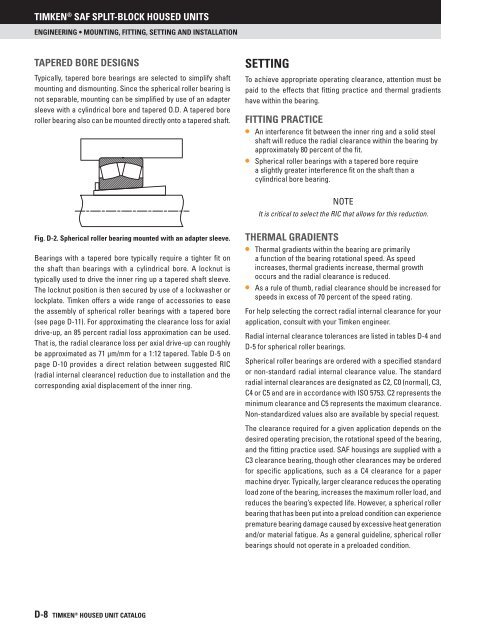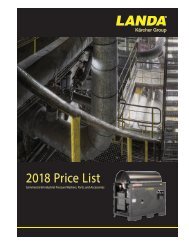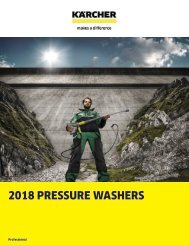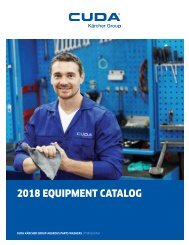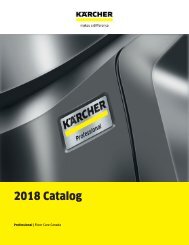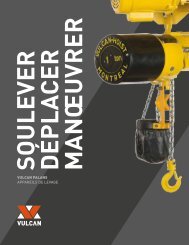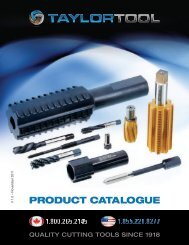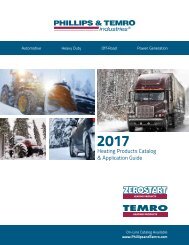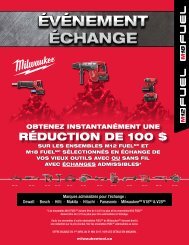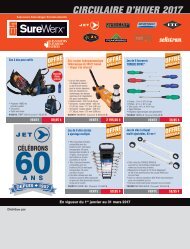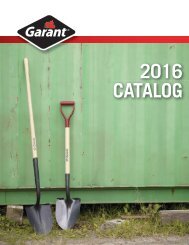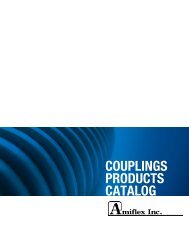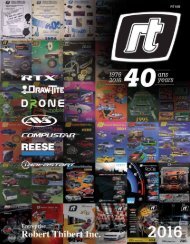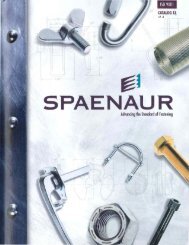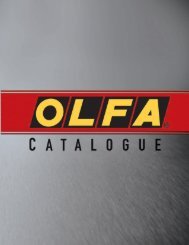You also want an ePaper? Increase the reach of your titles
YUMPU automatically turns print PDFs into web optimized ePapers that Google loves.
<strong>Timken</strong> ® SAF SPLIT-BLOCK HOUSED UNITS<br />
Engineering • Mounting, Fitting, Setting and Installation<br />
Tapered Bore Designs<br />
Typically, tapered bore bearings are selected to simplify shaft<br />
mounting and dismounting. Since the spherical roller bearing is<br />
not separable, mounting can be simplified by use of an adapter<br />
sleeve with a cylindrical bore and tapered O.D. A tapered bore<br />
roller bearing also can be mounted directly onto a tapered shaft.<br />
Setting<br />
To achieve appropriate operating clearance, attention must be<br />
paid to the effects that fitting practice and thermal gradients<br />
have within the bearing.<br />
Fitting Practice<br />
• An interference fit between the inner ring and a solid steel<br />
shaft will reduce the radial clearance within the bearing by<br />
approximately 80 percent of the fit.<br />
• Spherical roller bearings with a tapered bore require<br />
a slightly greater interference fit on the shaft than a<br />
cylindrical bore bearing.<br />
Note<br />
It is critical to select the RIC that allows for this reduction.<br />
Fig. D-2. Spherical roller bearing mounted with an adapter sleeve.<br />
Bearings with a tapered bore typically require a tighter fit on<br />
the shaft than bearings with a cylindrical bore. A locknut is<br />
typically used to drive the inner ring up a tapered shaft sleeve.<br />
The locknut position is then secured by use of a lockwasher or<br />
lockplate. <strong>Timken</strong> offers a wide range of accessories to ease<br />
the assembly of spherical roller bearings with a tapered bore<br />
(see page D-11). For approximating the clearance loss for axial<br />
drive-up, an 85 percent radial loss approximation can be used.<br />
That is, the radial clearance loss per axial drive-up can roughly<br />
be approximated as 71 μm/mm for a 1:12 tapered. Table D-5 on<br />
page D-10 provides a direct relation between suggested ric<br />
(radial internal clearance) reduction due to installation and the<br />
corresponding axial displacement of the inner ring.<br />
Thermal Gradients<br />
• Thermal gradients within the bearing are primarily<br />
a function of the bearing rotational speed. As speed<br />
increases, thermal gradients increase, thermal growth<br />
occurs and the radial clearance is reduced.<br />
• As a rule of thumb, radial clearance should be increased for<br />
speeds in excess of 70 percent of the speed rating.<br />
For help selecting the correct radial internal clearance for your<br />
application, consult with your <strong>Timken</strong> engineer.<br />
Radial internal clearance tolerances are listed in tables D-4 and<br />
D-5 for spherical roller bearings.<br />
Spherical roller bearings are ordered with a specified standard<br />
or non-standard radial internal clearance value. The standard<br />
radial internal clearances are designated as C2, C0 (normal), C3,<br />
C4 or C5 and are in accordance with ISO 5753. C2 represents the<br />
minimum clearance and C5 represents the maximum clearance.<br />
Non-standardized values also are available by special request.<br />
The clearance required for a given application depends on the<br />
desired operating precision, the rotational speed of the bearing,<br />
and the fitting practice used. SAF housings are supplied with a<br />
C3 clearance bearing, though other clearances may be ordered<br />
for specific applications, such as a C4 clearance for a paper<br />
machine dryer. Typically, larger clearance reduces the operating<br />
load zone of the bearing, increases the maximum roller load, and<br />
reduces the bearing’s expected life. However, a spherical roller<br />
bearing that has been put into a preload condition can experience<br />
premature bearing damage caused by excessive heat generation<br />
and/or material fatigue. As a general guideline, spherical roller<br />
bearings should not operate in a preloaded condition.<br />
D-8 TIMKEN ® HOUSED UNIT CATALOG


